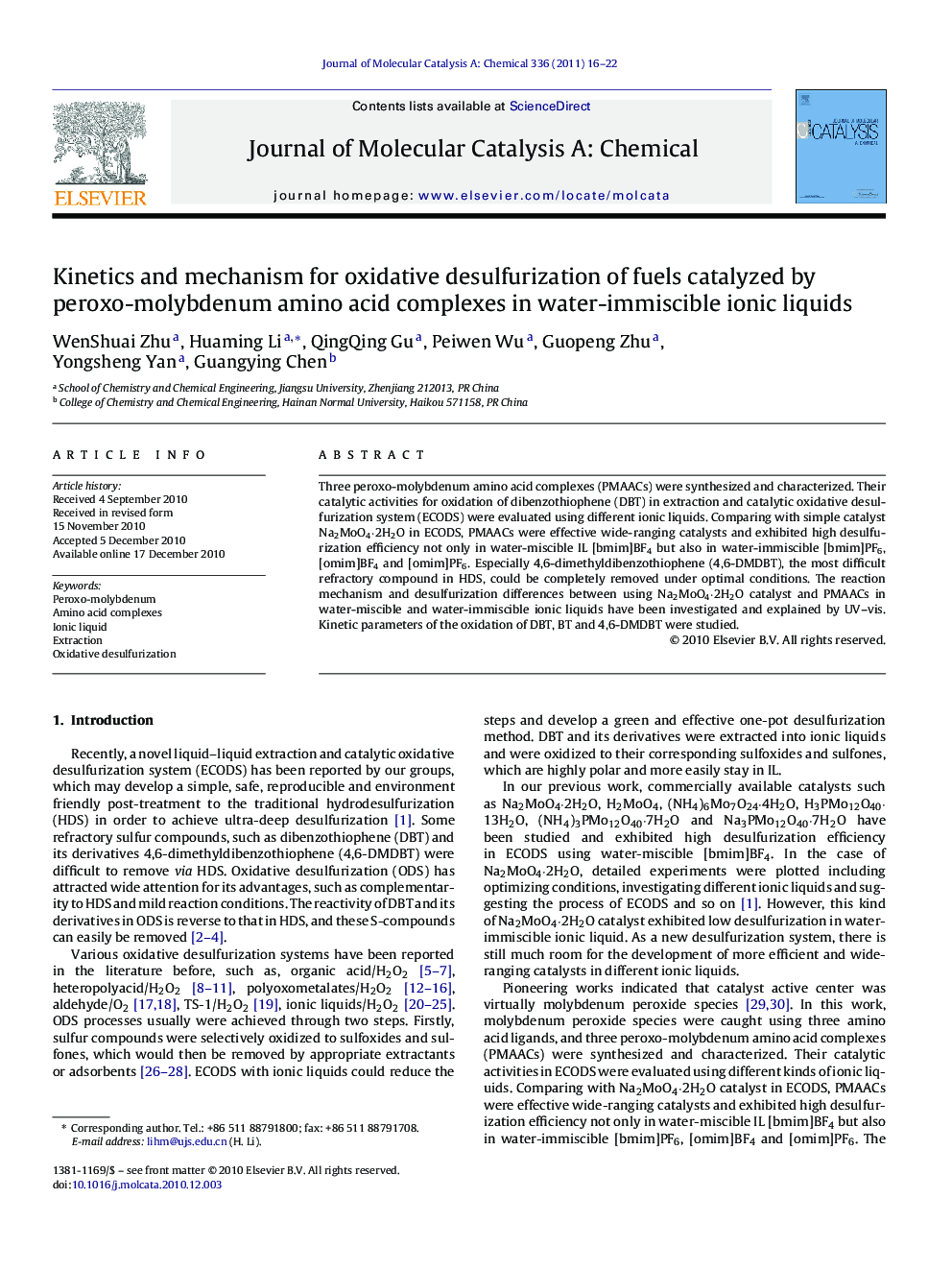| کد مقاله | کد نشریه | سال انتشار | مقاله انگلیسی | نسخه تمام متن |
|---|---|---|---|---|
| 66596 | 48439 | 2011 | 7 صفحه PDF | دانلود رایگان |

Three peroxo-molybdenum amino acid complexes (PMAACs) were synthesized and characterized. Their catalytic activities for oxidation of dibenzothiophene (DBT) in extraction and catalytic oxidative desulfurization system (ECODS) were evaluated using different ionic liquids. Comparing with simple catalyst Na2MoO4·2H2O in ECODS, PMAACs were effective wide-ranging catalysts and exhibited high desulfurization efficiency not only in water-miscible IL [bmim]BF4 but also in water-immiscible [bmim]PF6, [omim]BF4 and [omim]PF6. Especially 4,6-dimethyldibenzothiophene (4,6-DMDBT), the most difficult refractory compound in HDS, could be completely removed under optimal conditions. The reaction mechanism and desulfurization differences between using Na2MoO4·2H2O catalyst and PMAACs in water-miscible and water-immiscible ionic liquids have been investigated and explained by UV–vis. Kinetic parameters of the oxidation of DBT, BT and 4,6-DMDBT were studied.
Figure optionsDownload high-quality image (262 K)Download as PowerPoint slideResearch highlights▶ Peroxo-molybdenum amino acid complexes were effective wide-ranging catalysts in ECODS. ▶ High desulfurization was not only in water-miscible IL but also in water-immiscible IL. ▶ The most difficult refractory compound, 4,6-DMDBT in HDS, can be removed completely. ▶ Reaction mechanism in water-miscible and water-immiscible ILs was investigated. ▶ Desulfurization difference between using simple catalysts and PMAACs was explained.
Journal: Journal of Molecular Catalysis A: Chemical - Volume 336, Issues 1–2, 14 February 2011, Pages 16–22